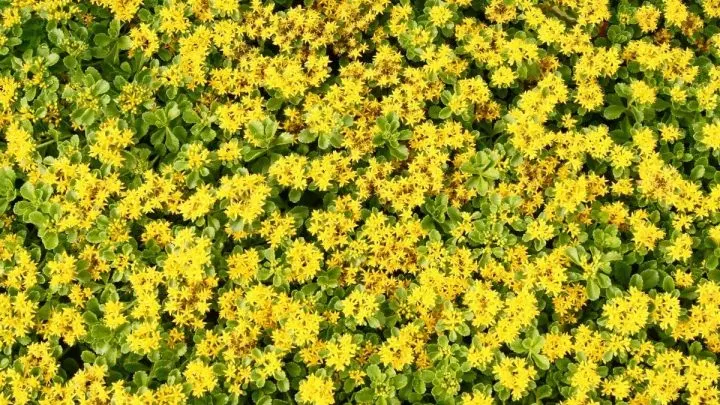Hello, dear ladies! Any thoughts on a ground cover with yellow flowers?
I hope you missed our articles. Of course, it’s only been a day since you were here, but I know how you feel. Something tells me you’re more than ready for another useful article about plants.
If you did, then great because today we bring you a super interesting article.
Do you have unused soil in your garden or yard? If you have, then this article is perfect for you. Today we will talk about ground cover with yellow flowers and all their details.
How to grow them perfectly, how to take care of them and in the end, in addition to these 8 offered, you will be able to choose one or two that are perfect for you.
If you are still not satisfied with our selection, at the very end, you have other options offered and you can check them yourself.
I hope you made the coffee. Shall we begin then darlings?
Light Green Foliage And Bright Yellow Flowers Can’t Go Wrong
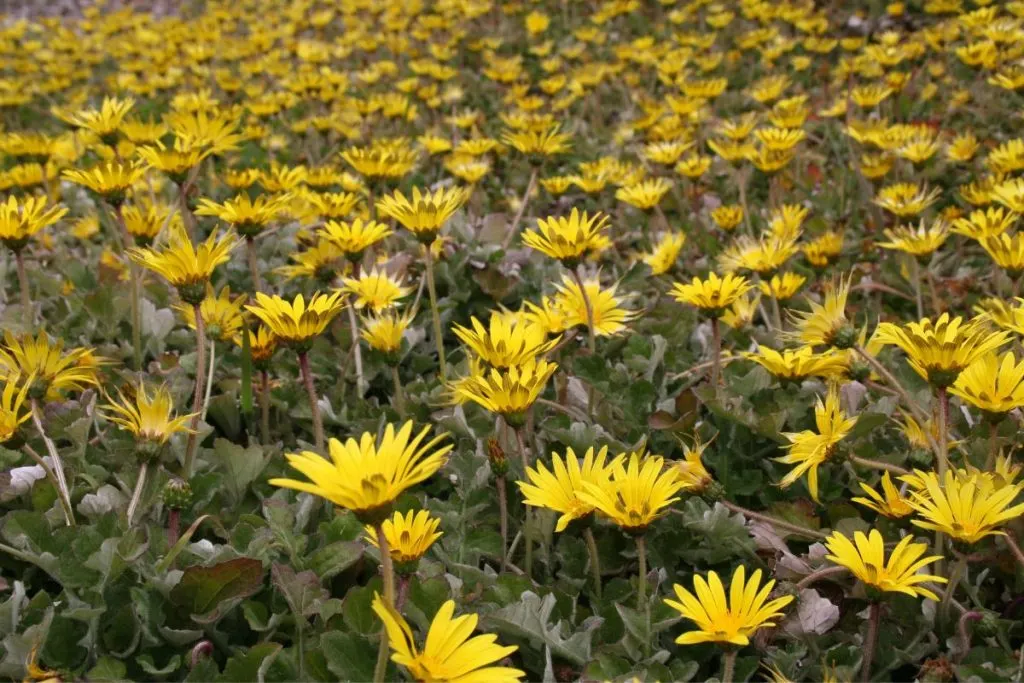
You have many types of plants in your garden, but in spring or autumn, you still feel that something is missing.
Most of the time, you have too many shades of green and then you want to bring some excitement and color to your garden or yard. Red, yellow, purple, that’s what you’re looking for in the spring and summertime. All plant lovers do, truth to be told.
If so, then great, today we will talk about 8 beautiful yellow plants and flowers that can serve as ground covers and will beautify your driveway.
Without further thoughts, this time for real, let’s see what did we prepare for you today.
1. Yellow Alyssum – Decor For Ground In Late Spring
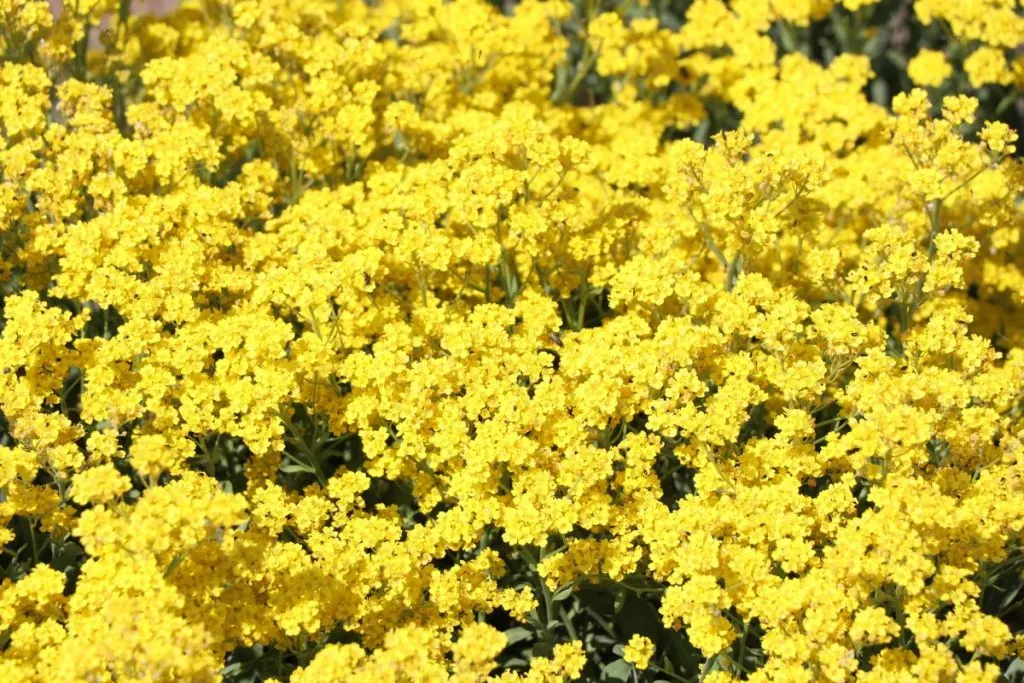
Yellow alyssum (Aurinia saxatilis), also known as a golden basket, is a perennial plant with a habit of spreading that produces small yellow beautiful flowers on erect stems between April and May (mid-spring). The leaves have an attractive blue-gray color.
Light conditions
Yellow Alyssum blooms best in full sun. However, in warm climates, the plants enjoy the afternoon shade to prevent leaf loss. Full shade can kill this plant, avoid it big time!
Soil type
Yellow Alyssum prefers well-drained sandy soil. Tolerates shallow, stony soils. Sandy soils are not recommendable for yellow alyssum.
However, heavy clay soils or other types of soil that remain wet and do not drain well can cause root rot and kill plants. Well-drained soil isn’t the most desirable option for this perennial plant.
Watering Schedule
This plant does not require much water and grows well in dry soil. Excessive watering is one of the few factors that can kill yellow alyssum.
Due to its good resistance to drought, it should be watered only when it has not rained for a long time, and the plants begin to wither and lose their leaves.
Medium moisture is the best for these decorative leaves and flowers. Consistently moist soil can kill your plant’s roots. Since it has delicate blooms, that can cause yellow spots on its lovely green leaves as well.
Temperature and humidity
Yellow Alyssum is cold tolerant and grows well in USDA growing zone dry tolerance areas from 3 to 7. It’s one of the hardy plants. However, it suffers from hot and humid weather.
Many southern gardeners treat it like an annual, enjoying the spring flowers before the leaves fall in the summer heat and humidity.
Fertilizer
In general, yellow alyssum does not require fertilization unless the soil is very thin. Too much fertilizer can cause poor flowering and growth.
If desired, you can fertilize with low-dose organic fertilizer or compost every two years in the fall. That will surely do great work on this dark green foliage plant. Fertilize it in early summer.
2. Angelina Stonecrop And Its Yellow Flower
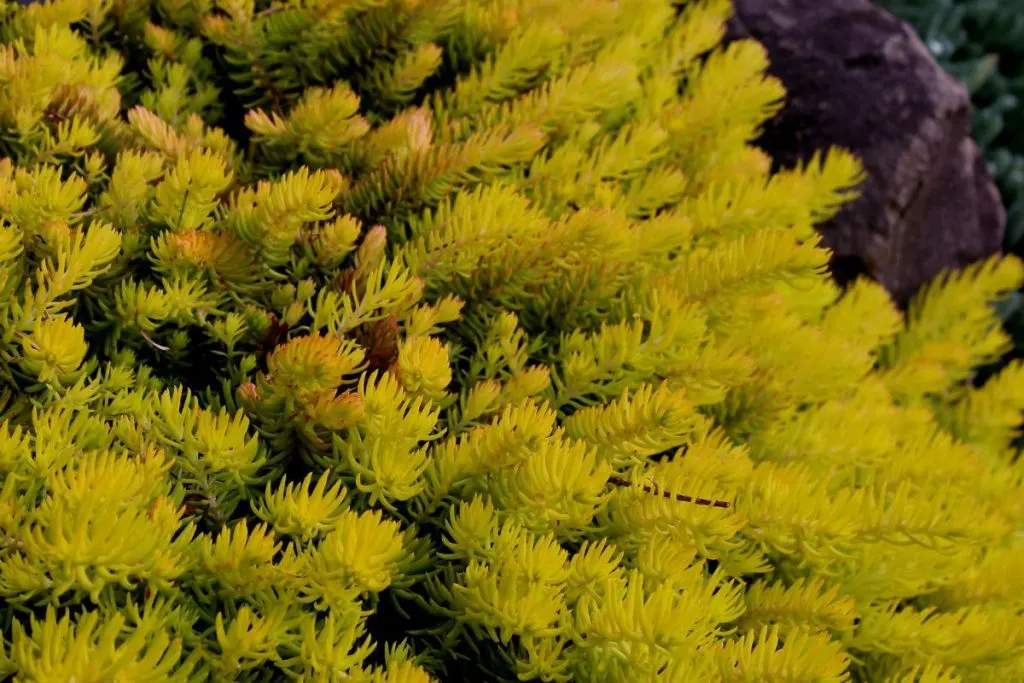
“Angelina” Stonecrop (Sedum rupestre “Angelina”) is an evergreen perennial with succulent leaves that form a low-growing carpet.
The name “stonecrop” comes from Middle English, referring to the ability of a plant to grow on stony and stony soils.
Light conditions
If possible, grow the culture “Angelina” in a sunny place, but it will tolerate shade. The full sun is what gives it such a wonderful golden color. In shade, its leaves won’t be so shiny as they are when they’re exposed to the sun.
Soil type
This plant prefers well-drained soil with a neutral pH. It grows well in poorly fertile sandy and stony soils. The roots are shallow but can spread through small cracks in rocky areas.
Watering schedule
This plant needs constant watering after the first planting. Heavy clay soils or other wetlands can kill plants. However, once installed, it is a drought-resistant floor covering.
Plants grown in containers require more frequent watering than plants planted in the ground. In late fall and winter, reduce watering to 10-14 days.
Temperature and humidity
The stock culture “Angelina” suitable for USDA zones 5a to 9a is somewhat tolerant of cold weather during the growing season.
It can withstand temperatures up to a few degrees below zero and still recovers well. It also has good soil drainage, so it tolerates high temperatures and humidity well.
Fertilizer
Stone plants generally prefer sparse soil, so they do not require fertilizer. Fertilizer can cause “Angelina” to fall and sag. If the soil lacks nutrients, it is recommended to use compost instead of fertilizer.
3. Creeping Jenny Will Rock Gardens
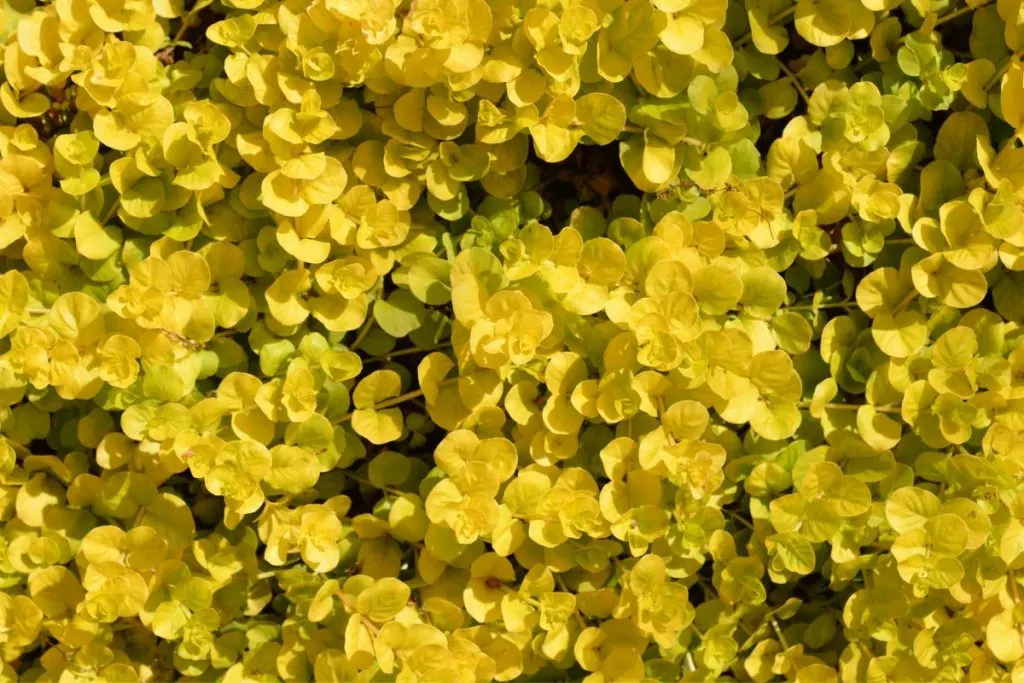
Creeping jenny is a perennial plant with small, yellow, bright flowers. The flowers are beautiful even if they do not last long.
For this reason, these flowering plants grow best for low-growing “kissing” leaves, which makes for excellent soil cover.
Even if you plant it in a pot and put it in the garden, be careful when you empty the pot at the end of the season. It can settle and grow rapidly like a fire.
Light conditions
Carnivorous Jenny grows well in full sun and partial shade. Depending on the sun exposure, the leaves change color.
It is golden yellow in full sun and light green in partial shade. In warm climates, the midday sun can turn the leaves yellow.
Soil type
Carnivorous Jenny prefers moist, well-drained soil and can also be found on river banks, where the soil is very moist.
Watering schedule
Wet, moist soil is essential for Baurjan Jenny to thrive, so water it regularly and prevent it from drying out.
Temperature and humidity
Creeping Jenny is a perennial plant in USDA zones 4-9, so it is hardy enough to withstand the cold winters and return to spring.
Fertilizer
Once “jenny” is established, it can be easily applied in early spring with a 10-10-10 solution.
Another carnivorous plant that you may find interesting is the venus fly trap for the terrarium.
4. Yellow Ice Plants Are Amazing Ground Cover Plants
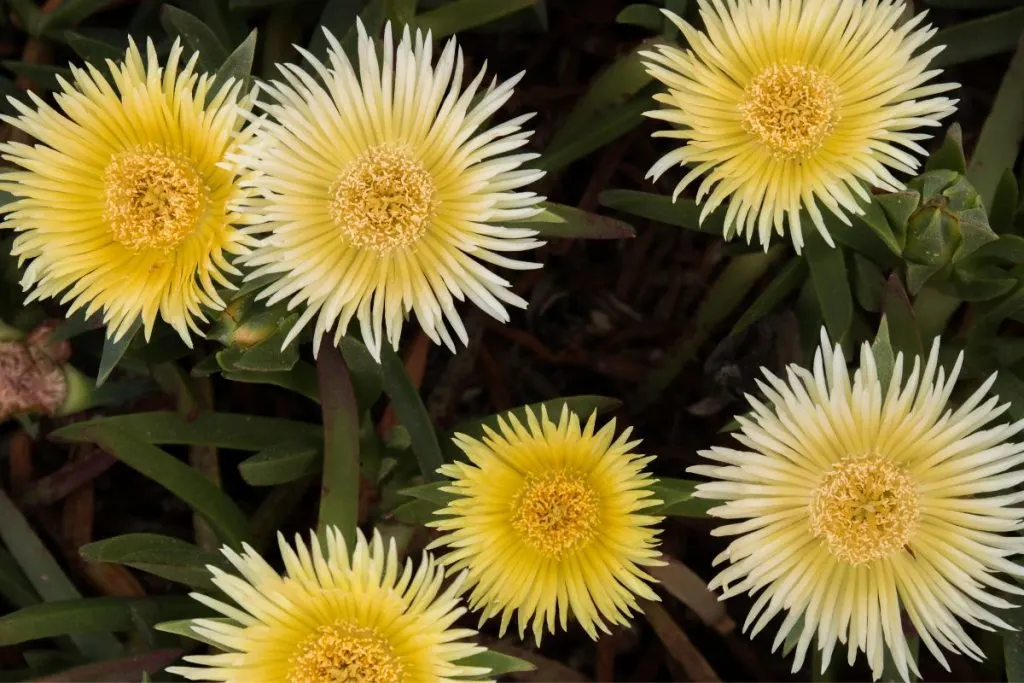
This plant is a perennial with warm weather, with brightly colored flowers. The name ice plant comes from the tiny hairs on the plant that reflect light like ice crystals.
The leaves are fat and juicy and turn black in autumn when the temperature drops.
Light conditions
Ice plants love sunlight, which allows them to bloom in full bloom. Hungry for sun plants have weak stems usually. Avoid direct sunlight for at least 6 hours during the day.
Soil type
Ice plants need dry, well-drained soil. The plants constantly suffer from humid conditions and do not grow at all on dense clay soils. Sandy and stony soils are ideal for this plant.
Watering schedule
Once established, slightly water the ice plants during the growing season. In non-rainy periods, watering once every two weeks is sufficient.
In hot weather, it may be necessary to water weekly. Dry before winter, so that the ice plants are not in too moist soil.
Temperature and humidity
All types of frost plants, including “hardy” plants, are sensitive to low temperatures. Check out the range of new cold-tolerant ice plants you want to grow as perennials.
If you live in a snowy climate, winter mulching may be recommended. They grow well in dry climates.
Fertilizer
It may be helpful to add compost or delayed release fertilizer when planting, according to the instructions on the label.
Ice plants grow well without nutrients. However, potting soil depletes nutrients faster than garden soil, so it may be necessary to feed ice plants grown in containers.
5. Flowering Ground Cover With Perennials Flowers Of Moss Rose
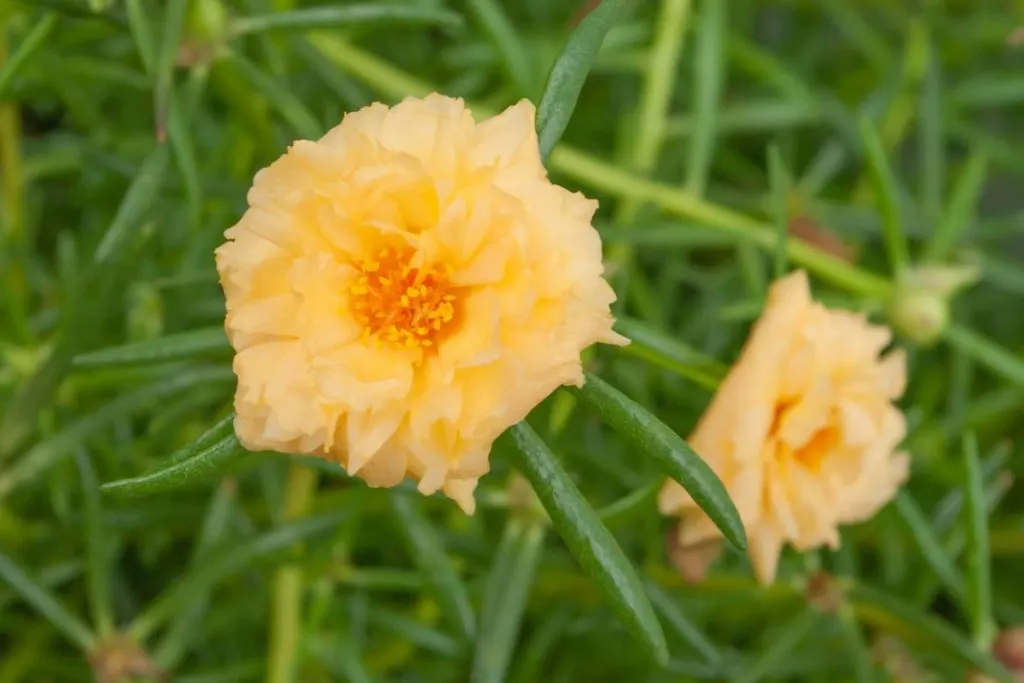
(Portulaca grandiflora) is a popular annual plant with spring flowering. If you look at the muscle rose plants left for sale in the summer, you will notice that the plants usually grow beautifully like in spring. This proves the power of the plant.
Light conditions
Moss rose plants need 6-8 hours of full sun on most days to look and grow best. If you try to grow it in a shady place, it may not bloom and not bloom.
Soil type
This plant grows in sandy and rocky soils and requires good drainage. If the garden bed has clay soil, grow moss in a container instead of improving the drainage of the clay soil. Soil that contains too much water can easily kill plants.
Watering schedule
These plants are not as drought tolerant as cacti, but they require less moisture. Plants can tolerate periods of drought, but flowering is generally best with well-drained soil moisture.
Temperature and humidity
Originally from Uruguay and Argentina, moss roses love high heat and low humidity. It withstands the cold and humid spring weather without frost.
But the best growth does not take place until the summer heat comes. Muscle roses are sensitive to frost and will die in winter, perhaps during the first frost.
Fertilizer
Mossy roses can tolerate dry soil, so they usually do not require fertilizer. However, providing plants with a balanced, slow-release fertilizer at planting will help promote healthy growth and abundant flowering.
6. Evening Primrose Fragrant Flowers Will Be A Great Cover Ground
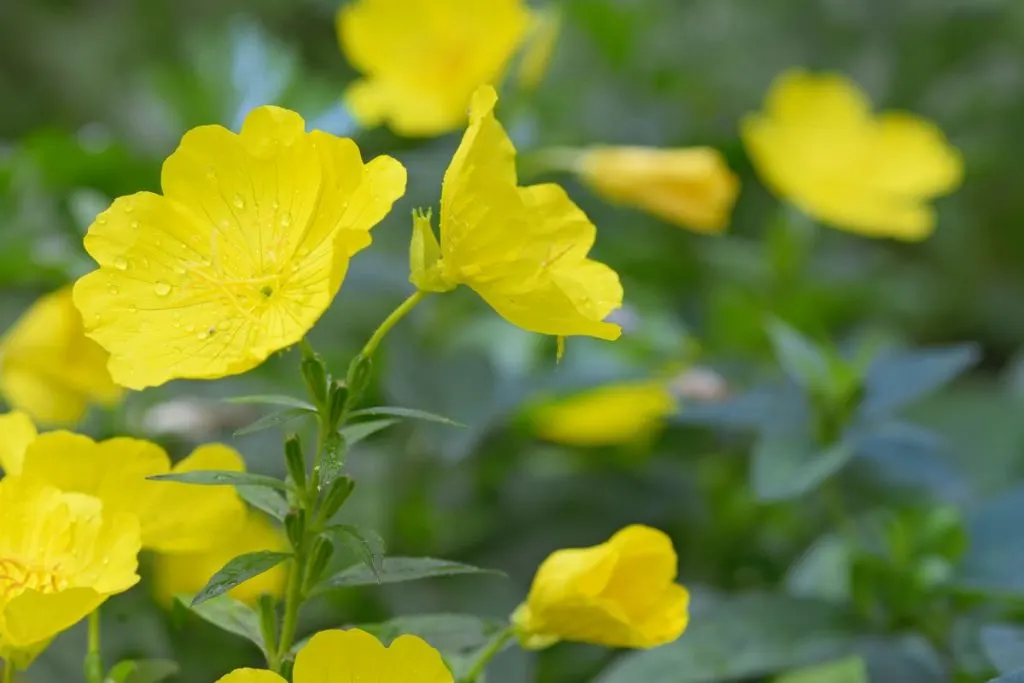
The common primrose (Oenothera biennis) is praised for its beautiful and delicate shape, but many consider this delicious flower to be an invasive and capricious weed.
Light conditions
Although you may think of it as a plant that blooms only at night (suitable for moon gardens), evening flowers love sunlight.
It should be grown in full sun (or partial shade) and where the plant receives at least 6-8 hours of warm sunlight per day.
Soil type
Another important requirement for the successful growth of evening flowers is well-drained soil. That is, the soil should still be moist, but not too moist.
Consider adding thick mulch to the soil to keep the roots cool throughout the summer. the
Watering schedule
Evening primroses grow best with plenty of water and need a little more water in summer, especially if grown in warm climates.
However, if you notice that many of the plant’s leaves are discolored or browned, it is a sure sign that the primrose is getting too much water.
Temperature and humidity
It blooms and grows well at the end of summer, but at first, it likes cool things without being hot.
For the plants to bloom well in summer, they need roots and leaves in the cool first months of spring.
Fertilizer
Fertilizer is not a necessary addition to the care of the evening primrose. It grows well without additional nutrients.
However, you can change the mixture with a little organic matter, especially if you are dealing with poor soil.
7. Common Yarrow Partial Shade Ground Cover Plant
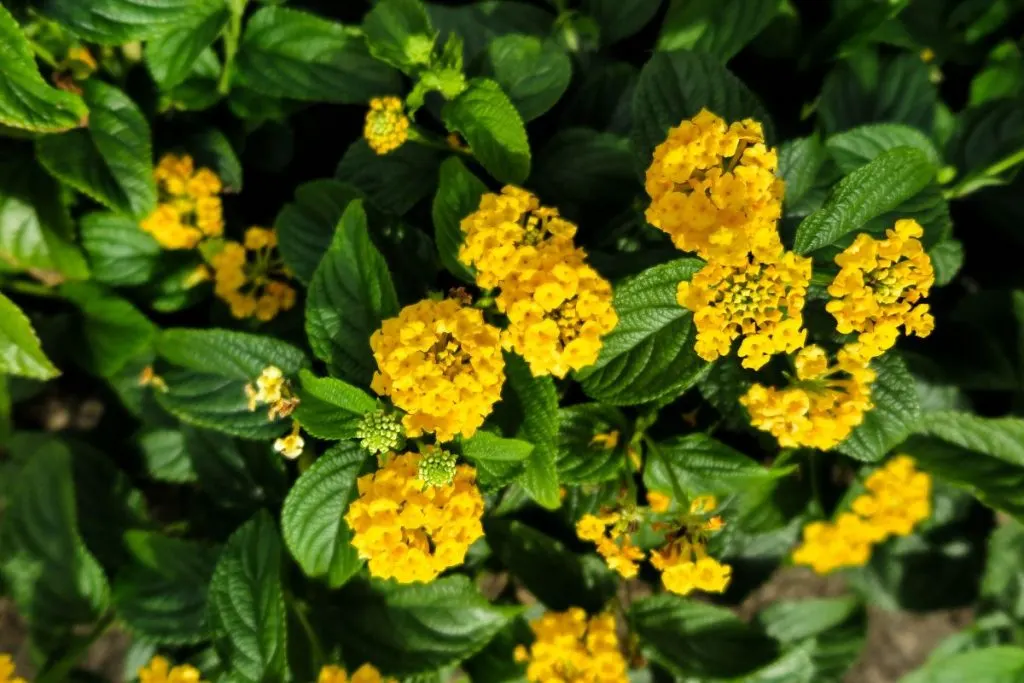
(Achillea millefolium) is a perennial flowering plant that bears several names, including gordaldo, bell pepper, and mouse.
In the American Southwest, you will hear it called plumajillo, meaning “feather”, because of the plumage and lace texture of the fragrant leaves of the plant.
Light conditions
Yarrow prefers sunny areas with lots of sunlight. This plant can tolerate partial shade, but if you do not get enough sunlight, it will grow tall and slender and may need pruning.
Soil type
Yarrow can adapt to a variety of soil compositions, from sand to clay. However, regardless of the environment, this plant grows in dry, well-drained conditions.
Nutrient-rich soils promote aggressive and potentially unwanted growth, so fertilizer or compost is not recommended.
Watering schedule
Once established, droughts are drought tolerant. Frequent light watering is necessary only to promote germination and ripening of small seedlings.
After that, you only need 1/2 inch of water per week to support growth. Stop watering completely during natural rain.
Temperature and humidity
Yarrow thrives in hot summer conditions between 65 and 75 degrees Fahrenheit, but heat damage can occur when temperatures rise above 86 degrees Fahrenheit.
Although it is generally considered unpretentious, the snake does not like cold winds or temperatures close to zero.
Fertilizer
Millet plants require very little maintenance when it comes to nutrition. The addition of annual compost in the spring is sufficient for the entire season.
However, some gardeners choose not to fertilize these plants at all, as nutrient-rich soils can promote the spread of the infestation.
8. Brass Buttons With Its Lovely Small Yellow Flowers
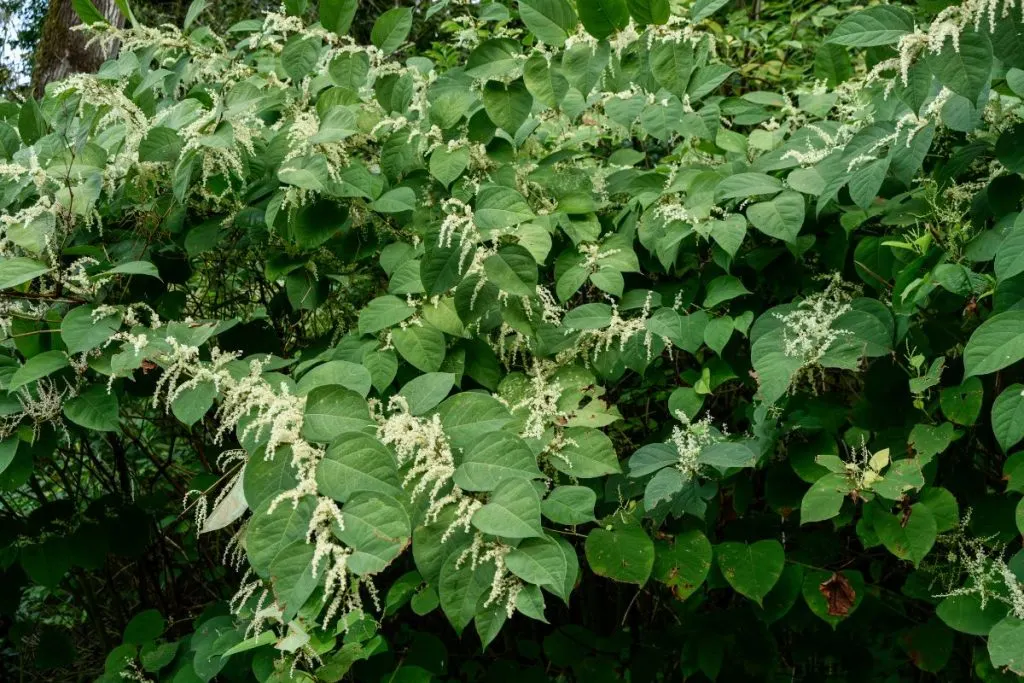
Brass knotweed is a unique Australian perennial plant that easily adapts to a variety of climates. At just two inches tall, it offers gardeners alternative ground cover to add interest to terrariums, fairy gardens, and flower beds.
The fern-like purple leaves are decorative in themselves, but the contrasting yellow-disc flowers are the icing on the cake.
Light conditions
In the cold climate of New Zealand, copper buds grow in full sun. In areas with hot summers, copper knots can easily burn under too much sun and require shade in the afternoon. Copper knots can also grow in the shade, but flowers are rare.
Soil type
Brassica plants have shallow roots and require well-groomed and light soil before planting. Heavy soil or clay can slow down plant growth, limiting its ability to act as a surface cover.
If your arrangement has compacted soil, do not hesitate to fertilize it with compost, peat moss, or leaf mushrooms before planting.
Watering schedule
In the habitat, copper-knotted plants grow in moist places. Always keep your plants moist for good color and plant health.
Plants with dry copper knots may turn brown at the edges of the leaves or may lose their leaves.
Temperature and humidity
The best climate for growing copper button plants is cool and rainy, like the typical spring days in Seattle or London.
Because this climate is not widespread, copper-knotted plants are fortunate to be able to withstand a variety of growing conditions.
Helps plants cope with hot and dry places, and provides occasional shade and fog.
Fertilizer
Copper bud plants do not require fertilization as long as proper soil management is performed. In areas with poor soil, a side layer of compost is enough to enrich the plants.
You Have More Options Besides These 8 Yellow Flowers
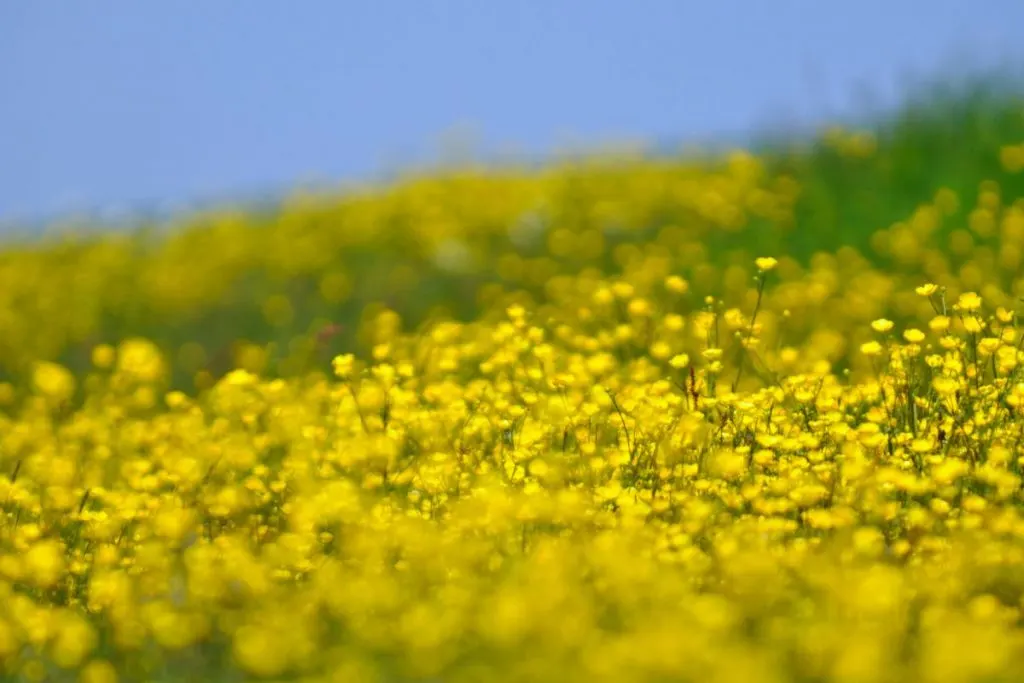
Besides these 8 ground cover with yellow flowers we mentioned you can always check another low ground cover:
creeping jenny lysimachia nummularia, yellow archangel, creeping buttercup, lady’s mantle, barren strawberry, partridge feather, yellow dead nettle, wild ginger, and many more.
Sometimes, these yellow flower varieties can have some other colors on their blooms as well, so you may get, yellow, white flowers, and blue flowers at once.
Sometimes, even red color can occur. However, this evergreen foliage is something you want to have in your garden.
Final Thoughts On Ground Cover With Yellow Flowers
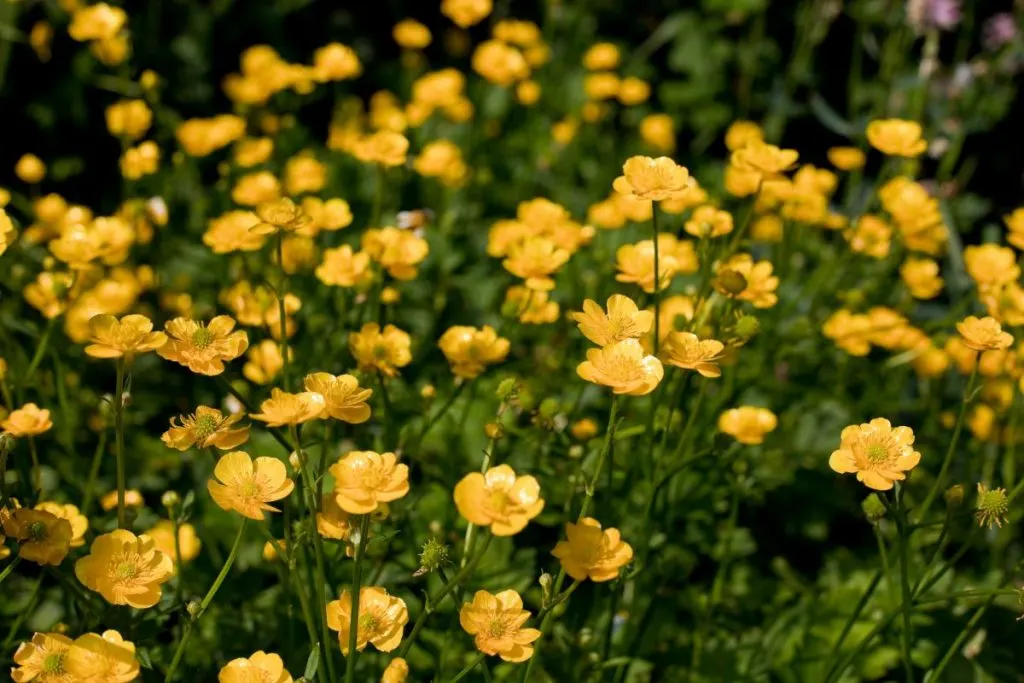
Before you know it, we’ve come to an end.
This is usually the case when you read what you are genuinely interested in.
I’m sure you’re already thinking about how to get rid of that vacant spot in the yard and what flowers to plant in that spot.
Did you decide? I know you are, great!
Dear ladies, I wish you the best of luck in planting some of these flowers that we have presented today. I hope it will bring a lot of color variety to your yard.
See you soon, good luck!

